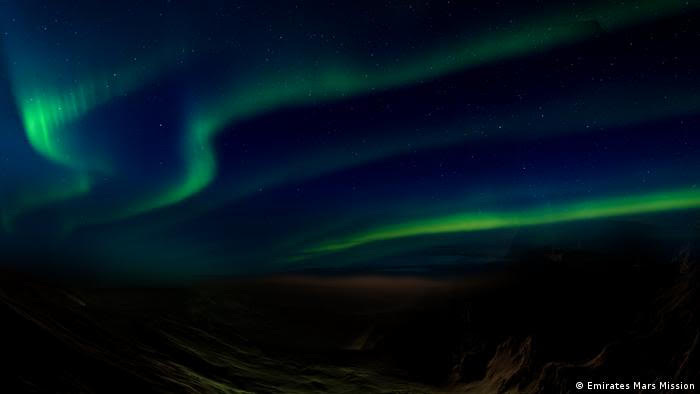The Galactic Times Newsletter #23 - May 1, 2022
Total Lunar Eclipse--What to View; This Just In--Mars New Roundup, Could 2010 Actually Have Happened?; The Morning Exclamation Point, w/Jupiter!; Meteors & 2 Dead Comets; Selling Lunar Eclipse Stuff.
Cover Photo - Total Eclipse in View Soon
In This Issue:
Cover Photo — Total Eclipse in View
Welcome to Issue 23
This Just In —
* A Roundup of Mars Discoveries
* DNA in Meteorites + Water on Europa = 2010?Sky Planning Calendar —
* Moon-Gazing - Moon Goes from Dark, past Mercury, into Dark Shadow
* Observing—Plan-et —
- An Exclamation Point in the Morning, with Jupiter on Both Ends
- Meteors and (Almost Two) Comets* Border Crossings
* The May 15-16th Total Lunar Eclipse (Cover Story)Astronomy in Everyday Life - Lunar Eclipses are in the Shadows of Solar Eclipses
The Classroom Astronomer Newsletter-Inbox Magazine #24 April 21-26, 2022 Issue Highlights.
Welcome to The Galactic Times Newsletter-Inbox Magazine, #23 !
Featured this month: The Moon, Mars, Europa and Jupiter. Clear skies, all!
- - -
Click here https://www.thegalactictimes.com for our Home Page, with all past issue Tables of Contents and stories indexed by topic. You can also hear and find useful materials for education from our former podcast, on the website (plus links to other Hermograph products and periodicals).
Head here -
— for our (Free) Subscription Page and subscribe, or to read in the Archive.
If you are enjoying this twice-monthly newsletter, please support it by 1) using the link at the end to spread copies to your colleagues and friends and urge them to subscribe (why should you do all the emailing, right? We’re glad to do it!) and 2) if you are an educator, subscribe to the Classroom Astronomer Inbox Magazine, too!
Thanks!
Publisher — Dr. Larry Krumenaker Email: newsletter@thegalactictimes.com
This Just In—
* A Roundup of Martian Discovery News
It has been a busy news cycle on Mars!
First, although Mars is farther than Earth and has only about 1% of Earth’s atmosphere, it surprisingly has aurorae. In fact, it has four kinds of them, the latest discovered by the Hope mission to Mars from the United Arab Emirates.
The usual solar-storm-powered auroras are weak and are called diffuse auroras. They are found at night, like those seen on Earth. A second kind is far more unusual; called discrete aurorae; they are caused by magnetized minerals on Mars’ surface. The third is the proton aurora, a dayside phenomenon made by the interaction of the solar wind with Mars’ farthest upper atmosphere’s hydrogen envelope, in its exosphere.
The newest type is called the sinuous discrete aurora. Hope found these “long worm-like streaks of energized electrons in the upper atmosphere” which can have lengths of half the planet’s circumference. And despite the name, the cause of these long emissions isn’t clear.
The aurorae must be as interesting to watch for any future Earthlings who become Mars inhabitants as are ours for those left on Earth, especially as the sunspot cycle ramps up. But those Mars dwellers still need a few things. Water and power, among others. For one things, there are no canals or lakes on Mars. But there are glaciers.
In a recent Journal for Geophysical Research - Planets, an article discussed finding about the CO2 glaciers at the planet’s South Pole. These glaciers lie on top of ground features that in turn overlie on the buried water-ice caps that settlers will need. The CO2 glaciers are moving, and flowing into deeper crevices on Mars into thicker and thicker deposits, kilometers deep and long in some cases. If it hadn’t flowed, the researchers say, the CO2 would be only meters thick and had remained where it had frozen out of the air.
They began to form six hundred thousand years ago. Should there be a Martian global warming, the air pressure from the sublimating carbon dioxide would double easily, though that still would not make it a sustainable atmosphere for humans.
Meanwhile, if you are going to go out for a drink of water, how are you going to power the lights back at your Mars home for your return?
It has long been presumed by NASA and others that low-level forms of nuclear energy will be the primary source of power on Mars for its habitats. The reasons are that they will be on 24 hours (well, 24 hours and 39 minutes) a day and won’t be affected by the dust storms of Mars, as past Mars probes have been. Some of the latter have ultimately died because the dust covered the photovoltaic cells so much they could neither power the unit nor charge the batteries. Further, sunlight is weaker on Mars. Past studies were primarily evolved around short-term (2 year) manned missions, not permanent bases.
A study from the University of California, Berkeley says “not so fast.”
As both nuclear power and solar power technologies have improved and lightened in weight over the years, the study in Frontiers in Astronomy and Space Sciences pits solar versus nuclear for long-term habitation needs and also the cost of shipping the technologies (solar is much lighter than nuclear!). It finds that for more than half the Martian surface on either side of the equator, solar technology wins hands down. Further, solar can generate hydrogen gas during the day from electrolysis of water (see: glaciers) which can power fuel cells during the night, as well as battery storage units.
Are you listening, Elon?
* DNA in Meteorites + Water on Europa = 2010?
Okay, this is a little poetic license but….the followup book and movie to the famous “2001 - A Space Odyssey”, called “2010,” ended up with the astronauts returning home with a warning to stay away from Jupiter’s moon Europa, where there was primitive life in a subsurface ocean. Could there really be some? Two ingredients have been detected that could improve the odds of this happening.
First, in Nature Communications for April 19th, three researchers from Stanford University published findings indicating that Europa may have a comparable surface feature to one found in the Greenland ice sheets. It is fairly certain that Europa has an ocean under a 20-30-km thick ice sheet, and sometimes we seem to see some vaporous clouds above Europa’s surface. Over Europa’s surface everywhere are lines called ‘double ridges,’ a feature also found on Earth. Here, these happen where fractures, pressure from below, and refreezing above cause some water to be emitted along the fracture hundreds of kilometers long, depositing ice on either side. This implies that all over Europa there is a layer of water at a very shallow depth as well as that deep ocean.
Then, Japanese researcher Yasuhiro Oba announced in Nature Communications a week later that he had found the last remaining missing DNA forms in several carbon-type meteorites. Quoting “Two types of chemical building blocks, or nucleobases, are needed to form DNA and RNA. These are the pyrimidines, which include cytosine, uracil and thymine, and the purines, for example guanine and adenine. Thus far, only purine nucleobases and uracil have been identified in meteorites.” In Oba’s announcement, he and colleagues stated they had found “various pyrimidine nucleobases, such as cytosine and thymine,” which had not been seen in meteorites before. It has long been surmised that these could have been delivered by meteoritic particles to early Earth.
If they occurred here, could they also have occurred on Europa? Recently, the latest ten-year space plans include a lander on Europa. My friend (yes, he was) Arthur C. Clarke would be very interested in the results….
Sky Planning Calendar
Moon-Gazing
Moon passages by a star, planet or deep sky object are a good way to find a planet or other object if you’ve never located it before.
May 2 Mercury is 1.8-degrees North of the evening Moon. A really good, and nearly last this evening apparition, chance to see the innermost planet, before Mercury dives deeper into the twilight. It is near the Pleiades so this will be a nice photographic opportunity.
May 4 The dwarf planet Ceres will be occulted (eclipsed) by the Moon, if you are in the South Atlantic, north Africa, southern Europe or the Middle East as far as India. All others will find the Moon very very near Ceres.
May 5 Apogee. The “micro” crescent moon is near the star Pollux.
May 8 Night of the First Quarter Moon, if you live in the USA.
May 9 That bright star near the Moon is Leo’s Heart, Regulus.
May 13 It’s Friday the 13th! Are you superstitious? Then don’t look at the star near the Moon tonight. It is called Spica and it is blue-white hot and its light will pierce your eyes (okay, just kidding….)
May 15-16 It is Full Moon night, but which night depends on whether you are Chicago or westward (then it is the 15th) or New York or eastward (morning of the 16th). It is also the night of the Total Eclipse of the Moon (see below). The Moon is one day short of Perigee so the eclipsed Full Moon will be about as large as it could be.
Observing---Plan-et….
If you go out on May 1st in the dawn, you’ll still see Jupiter and Venus close by as twin headlights (or maybe these days, Go-Pro head-lamps?) rising near the start of morning twilight. But that condition won’t stay put. In fact, the planets move apart rapidly, about one degree (two full moons) per day such that by May’s end, Jupiter will be pushing up alongside Mars, about 30 degrees away.
A summary of the planetary sky for the first half of May….shows it is fairly quiet after the mad dance of the last half of April:
Mercury: Has been setting after evening twilight, and has been the sole evening planet. But the first condition ends on the 3rd when it starts setting again while twilight is still in force. On the 17th, the latter ends as the small, and fading in brightness, world gets too close to the Sun to be found.
Venus: Still the brightest planet in the dawn but it now rises before morning twilight begins and will for the rest of its time in the morning (into October).
The Morning Exclamation Point Lineup: Venus is the brightest and lowest part of the MEP, with second brightest Jupiter increasingly above and right of it. By the expiration date of this issue, Jupiter will be halfway between Venus and Mars, the dimmest of the four morning worlds. The upper end of the MEP is Saturn, brighter than Mars and rising roughly 2:30 Daylight Savings Time, well before twilight, and about as far from Mars as Mars is from Venus.
Smaller Worlds: Not quite the start of summer (Northern Hemisphere) meteor seasons but this is one of the better showers this year because of the Moon phase. The Eta Aquarids can explode to as much as many as 60 meteors per hour, though because of its low altitude for those in the USA it is usually far far less. You can see some for 2-3 days on either side. Since the Moon is only an evening crescent, it is long-gone by the time the radiant in Aquarius rises before dawn, lots of darkness! As with most meteor showers, the best observations are in the few hours before morning twilight, and you should look anywhere BUT towards Aquarius, so you can see the longest and brightest meteor trails…unless you are more interested in plotting trails on a star chart to capture its radiant point, which does move a bit from night to night.
Meanwhile, as meteors come from comets, there has been some buzz about a possible naked-eye comet, Comet PanSTARRS C/2021 O3. Supposed to appear in the evening sky after passing close to the Sun (perihelion) on April 21st at a distance of 0.29AU, this comet appears to have ‘melted’ in the close heat of the Sun and no astronomers have seen the comet emerge from behind it.
Additionally, Comet Leonard, which did reach naked eye brightness, was photogenic for astrophotographers, and interesting for its very dynamic tail, survived its December brush with the Sun at a not-as-close perihelion, yet during April suddenly disintegrated as well, deep in southern skies. So much for binocular or naked eye comets in the sky this spring….
Border Crossings
Yay! Astrology and Astronomy match! Well, for a little while. Your friendly neighborhood astrology column says the Sun is in Taurus this whole two weeks. Astronomically, it is in Aries….until May 13th, after which it is in Taurus. No bull!
The Total Lunar Eclipse of May 15-16 (Cover Story)
The only total lunar eclipse to be totally visible from (most of) the Americas until 2025 takes place on the night of May 15-16th. Centered over South America, everybody there plus in North America east of a line from roughly El Paso, TX through Minneapolis, MN and north to Hudson’s Bay, Canada gets to see all parts from start to finish. West of that line through Alaska and Hawaii and New Zealand, the eclipse is in progress at moonrise. For Africa and Europe and the Near East, it sets while in progress.
You’ll find the Moon barely in the claws of Scorpius the Scorpion, perhaps a blue-edged, reddish soap bubble between the T-shaped head of the Scorpion and the large, faint diamond-shape of Libra the Scales, riding low in the sky in North America. The times in Central Daylight Time are:
Penumbral begins 8:32pm May 15
Partial (Umbral) begins 9:28pm
Totality begins 10:29pm
Totality ends 11:54pm
Partial ends 12:55am May 16th
Penumbral 1:51am
Adjust for your time zone.
You won’t see the penumbral stage’s start or end. Usually, penumbral shading isn’t evident until the 20-ish minutes closest to partial phases, as a graying or dulling of the moon’s edge to the east (left) side of the Moon at the start, and the opposite side after the partial phases end. It is an interesting observational challenge to see how soon you can conclusively see the penumbral shadow, naked eye or binoculars, and if the timings are the same, and for how long afterwards.
It is also interesting to note how soon you see colors in the umbral shadow, and when totality comes, what colors. Astronomers use the Danjon scale, at mid-eclipse. L=0 is black, almost or even invisible (I’ve seen one of those as a child, below naked-eye brightness!), 1=dark, gray or brown, 2=dark red or rust colored, 3=brick red, and 4=bright copper-red or even orange. All these are due to atmospheric conditions in that ring of twilight around the Earth. Would be an interesting experiment to see how the L numbers correspond to how much penumbra is seen?
Finally, watching the colors shift from totality’s start to end and photographically recording them, or even just pencil sketching is a fantastic art-science project!
Astronomy in Everyday Life
Lunar Eclipses are in the Shadows of Solar Eclipses
Bonnie Tyler sang “Total Eclipse of the Heart”. There are several food products (if you count beer as one) with the word “Eclipse” in their titles. There is a car called the Eclipse. If you Google Image the word “Eclipse” you’ll get—covered—by products with the name Eclipse in them. But whether they are relevant to eclipses or the developers just liked the name, they were always of the solar kind, if they were clearly astronomical at all.
Not to be deterred, the Galactic Times staff dug deep into the shadows and found a few products that actually feature Lunar Eclipses! Now some of them clearly don’t have the astronomy right. They are actually moon phase line-ups or just mythological or artistic moons and have nada to do with any kind of eclipse. Sometimes, apparently, they just liked the words.
In the pictures above….not sure where these came from. On the left is an image of lunar eclipse squash.
Yeah. Right.
On the right, it makes a little more sense. It was Lunar Eclipse Cacao Barry. The dark kind….
But a few were clearly the joy of lunatics (meant in a good way!). Below are some jewelry with clear lunar eclipse images in mind; the one on the right more or less showing shadow progression, though the edges are too straight.
Then, as was stated…some people just like the words….how a purple toy can be called the Lunar Eclipse Yo-Yo isn’t quite clear. <sigh>…
The Classroom Astronomer Newsletter-Inbox Magazine #24 April 21-26, 2022 Issue Highlights.
Cover Photo - Phobos Eclipse
Welcome to Issue 24 - Best Laid Plans….
Article - What Can You Do With a Martian Eclipse?
Connections to the Sky -
Making a WorldWide Telescope TourThe RAP Sheet – Research Abstracts for Practitioners
- Identifying Students’ Mental Models of the Apparent Motion of the Sun and Stars, an In-Dome Assessment Tool
Thanks for reading The Galactic Times Newsletter! If you haven’t already, subscribe for free to receive new posts.
Spread the word and get others to sign up!
Articles for The Galactic Times Newsletter are welcome. Query us at the email address below!
You can help support this publication by also subscribing to The Classroom Astronomer, and by purchasing other books or products from The Galactic Times’ parent company Hermograph Press. Click below to head to Hermograph’s home page:











